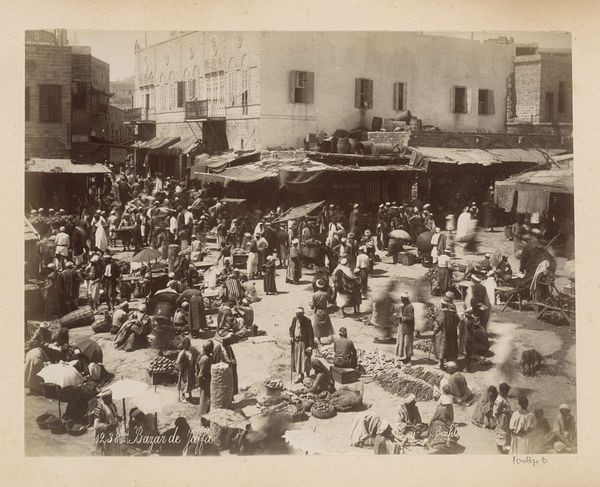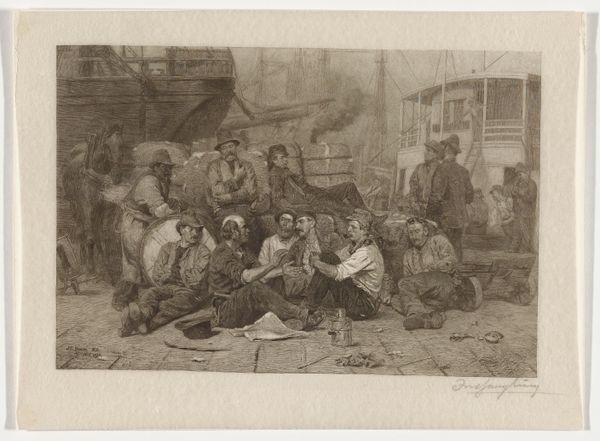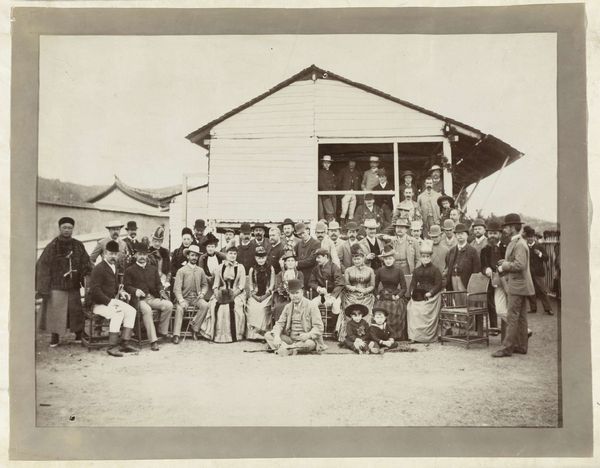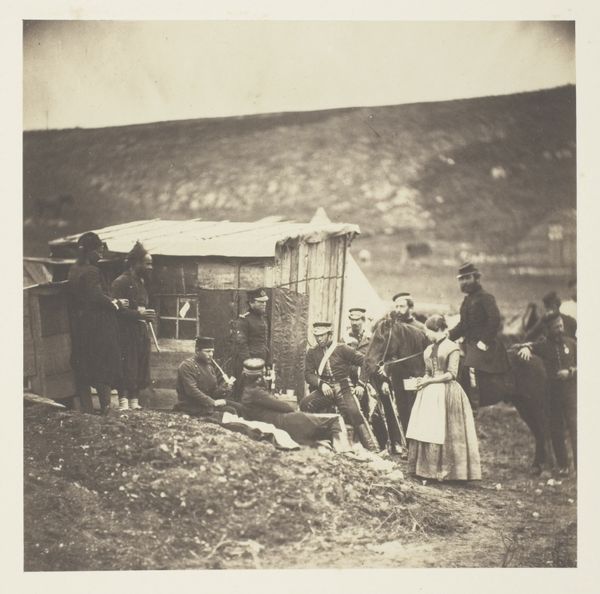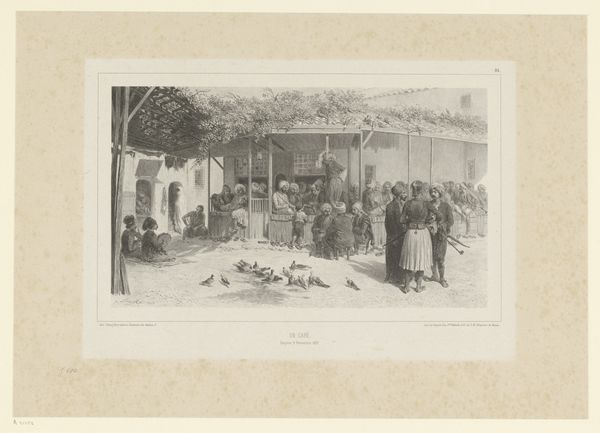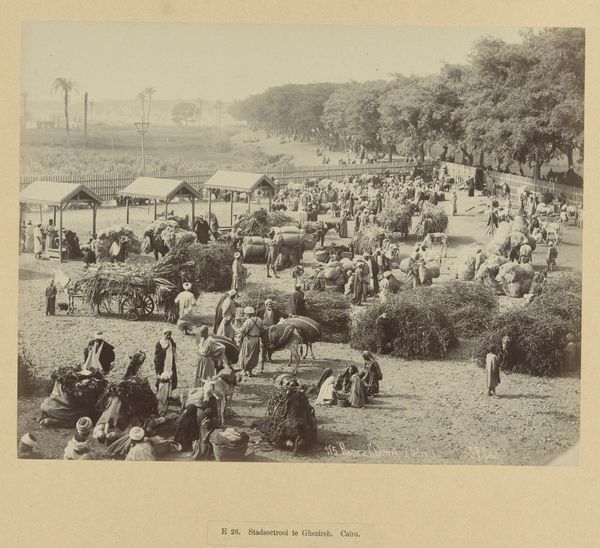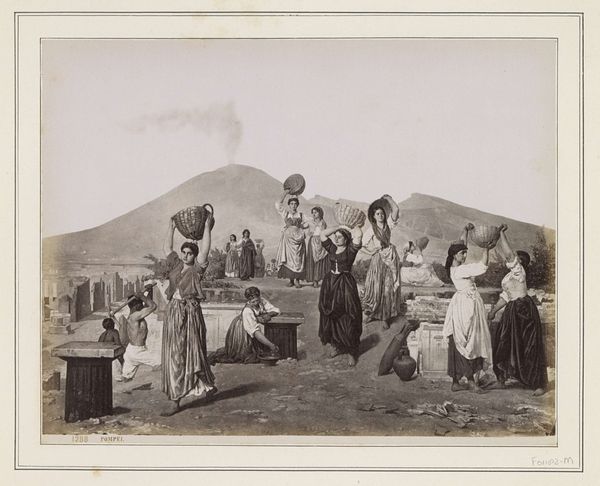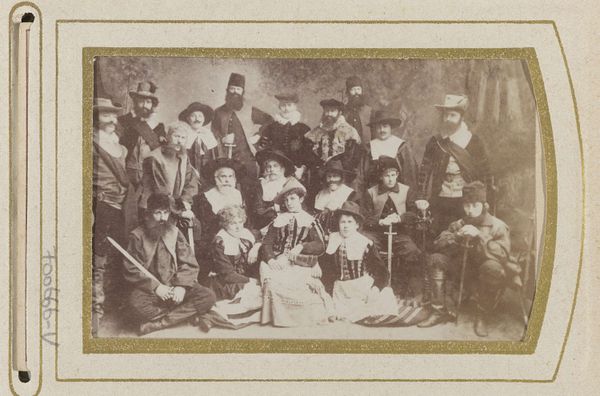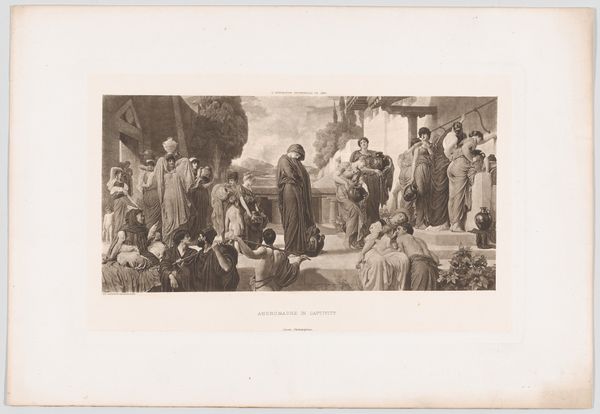
Prison des Chantiers, le 15 août 1871, Versailles 1870 - 1871
0:00
0:00
photography, gelatin-silver-print
#
16_19th-century
#
war
#
photography
#
soldier
#
group-portraits
#
gelatin-silver-print
#
men
#
history-painting
#
realism
Dimensions: Sheet: 36 x 46 cm (14 3/16 x 18 1/8 in.)
Copyright: Public Domain
Editor: This photograph, "Prison des Chantiers, le 15 août 1871, Versailles," by Ernest Eugène Appert, captured between 1870 and 1871, shows a large group of women, with what looks like a makeshift camp in the background. It's a gelatin silver print, so it's remarkable the detail captured. It feels… staged, almost. What's your perspective on this work? Curator: Well, first, let's consider the material context. A gelatin silver print meant Appert was part of the shift making photography more reproducible and accessible. Look at the scale; it’s a 'history painting' rendered photographically, challenging the very notion of high art. What’s being documented here isn't a heroic battle, but the aftermath – the consequences. Who are these women, and what labour underpinned their circumstance and portrayal? Editor: I see what you mean. It’s not just a portrait, but a document reflecting a specific political and social climate. They all look very ordinary, not heroic at all. So the ‘history’ isn’t about leaders or victories, but about everyday lives affected by conflict? Curator: Precisely! These are women, likely connected to those imprisoned after the Paris Commune. The very act of creating this image, of assembling and posing these women, speaks to the complex labor and resources required to construct a particular narrative. Consider Appert’s role. He manufactured evidence against the Communards. Do you see the critique embedded within this manufacturing process, considering the history, and making this less ‘Realist’ than it pretends to be? Editor: So, the materials and the means of production actually *create* a kind of… propaganda? I hadn’t considered that. It definitely shifts my understanding of it. It shows a certain power to material creation of a counter-narrative for its consumers. Curator: Exactly! By focusing on the material reality of the photograph and its context, we unravel its complex message. A fascinating commentary emerges regarding materials as a process within history.
Comments
No comments
Be the first to comment and join the conversation on the ultimate creative platform.


